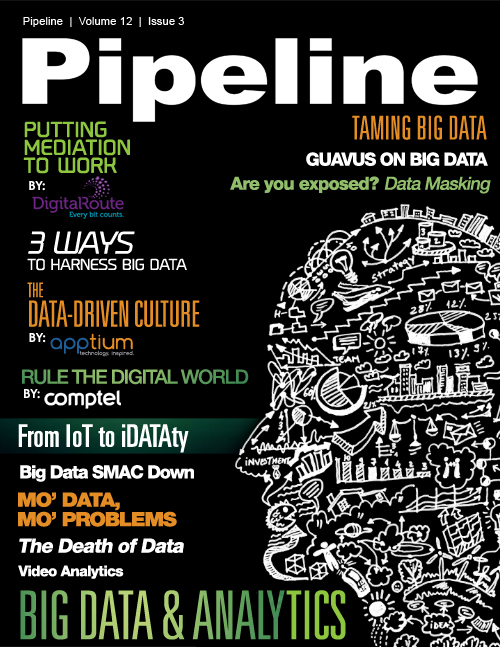Taming Big Data
Intelligent marketing
In case you haven't noticed from the mailers, most CSPs run marketing campaigns in a fairly simple fashion. They are built on customer profile data and peppered in with limited automated rules, such as sending renewal offers near the contract expiration date. According to a past post on IBM's website, "some of the more advanced organizations might incorporate psychographic data or third-party information. Any way you slice it, service providers have a wealth of data about subscriber usage and location; however, they do not often have tools to analyze it." And, as Guavus explains in this issue of Pipeline, CSPs don't always need another big metal box or data input, but a better ability to draw actionable inferences from the data they already collect.
One solution on the market from IBM, part of its big data and analytics platform, enables service providers to analyze subscriber usage and digital behavior (channel interaction, social media) for opt-in subscribers and combine it with subscriber profile to identify and deliver targeted offers in real-time. According to IBM, the benefits include: driving real-time contextual, targeted marketing offers resulting in higher acceptance rates and revenue, reducing churn, increasing customer loyalty and satisfaction, and reducing time and cost for developing campaigns.
How do these solutions work in the real world? Globe Telecom has applied big data analytics to improve effectiveness of promotions by 600 percent. Ufone is deploying big data analytics to improve marketing offer acceptance rate from 25 percent to 50 percent. Further, XO Communications leveraged IBM's PureData System for Analytics to improve customer experience which resulted in current savings of $15 million per year.
Network analytics
For many years, network operators have maintained a rather microscopic focus on network management; and when you consider the history of telecoms and its engineering background, it makes sense. The emphasis was on making sure elements and interconnects didn't break, and that capacity was appropriately planned (or in most cases, over-planned) to support surges. Network visibility in this system is limited to post-hoc, summary review of data snapshots, and is generally fragmented. Unfortunately, this does little to take into account the customer experience.
By applying big data to a network analytics solution, CSPs attain the necessary information to manage the network, end-to-end, with the customer experience in mind. Again, this takes some wrangling: network data must be correlated with customer experience data (some of which will be unstructured) in real-time. There are several solutions in the market that are essentially overlays which leverage a CSPs current system data inputs, and don't require major, long-term investments, or impact the service experience as they are being brought online.
There are other types of data that can be integrated with very beneficial outcomes. For example, the date of a college commencement. We know that graduation ceremonies spike mobile usage, as do other large events. Correlating and automating capacity scheduling to support these cases is possible when all of the data streams are connected within an analytical framework.
Sprint leans on big data analytics to put real-time intelligence and control back into the network driving a 90% increase in capacity. This has lead to improvements, according to the latest RootMetrics report, as well as some crafty marketing campaigns.





















